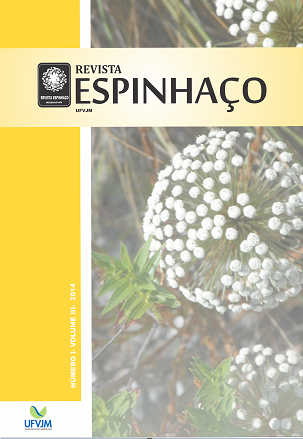Avaliação de métodos de desagregação para geração de grades de população
DOI:
https://doi.org/10.5281/zenodo.3966412Palavras-chave:
distribuição da população, grades de população, agregação, desagregaçãoResumo
O objetivo deste trabalho é avaliar métodos de desagregação de dados para gerar grades de população, utilizando como referência uma grade gerada através da agregação de microdados censitários, o que permite obter resultados mais precisos acerca do desempenho desses métodos. Para realizar a avaliação foram selecionadas três metodologias. A primeira utiliza uma matriz contendo os erros e acertos na identificação de áreas povoadas e não povoadas, permitindo avaliar a acurácia da distribuição espacial da população. A segunda utiliza uma regressão linear cujos coeficientes permitem avaliar a qualidade da adequação aos dados de referência. Finalmente, utilizamos uma fórmula para calcular a diferença entre os valores de população, indicando se há uma subestimação ou superestimação. Os resultados sugerem que a escolha da metodologia mais adequada depende dos objetivos a que se destina a grade de população, bem como da disponibilidade e qualidade dos dados auxiliares, além das características da área de estudo.
Referências
BRACKEN, I.; MARTIN, . The Generation of Spatial Population Distributions from Census Centroid Data Source. Environment and Planning A, v. 21, n. 4, p. 537-543, 1989.
BUENO, M. C. D.; MARTIN, D.; D´ANTONA, A. O. The Brazilian Population Grid: a hybrid approach. In: European Forum for Geostatistics – SOFIA CONFERENCE, 2013, Bulgária. Disponível em <http://www.nsi.bg/efgs2013/data/uploads/pres entations/DAY2_WS1_5_Paper_BUENO_ok.p df>. Acesso em outubro de 2013.
CLARKE, J. I.; RHIND, D. W. Human Dimensions of Global Environmental Change. International Social Science Council e UNESCO: 1992.
DEICHMANN, U. A Review of Spatial Population Database Design and Modelling. National Center for Geographic Information and Analysis (NCGIA). 1996.
EICHER, C. L.; BREWER, C. A. Dasymetric Mapping and Areal Interpolation: Implementation and Evaluation. Cartography and Geographic Information Science, v. 28, n. 2, p.125-138, 2001.
EFGS – European Forum for Geostatistics. GEOSTAT 1A - Representing Census data in a European population grid, Final Report: 2012.
EXETER, D. J.; BOYLE, P.; FENG, Z.; FLOWERDEW, R.; SCHIERLOH, N.. The creation of Consistent Areas Through Time (CATTs) in Scotland, 1981-2001. Population Trends, v. 119, n.1, 2005.
HOGAN, D. J. Crescimento populacional, padrões de assentamento e o ambiente físico. In: ANPOCS (ed.). Ciências sociais hoje. Rio de Janeiro: ANPOCS, 1992.
IBGE – Instituto Brasileiro de Geografia e Estatística. Censo 2010 – Síntese das Etapas da Pesquisa, 2010. Disponível em
<http://censo2010.ibge.gov.br/images/pdf/censo 2010/sintese/sintese_censo2010_portugues.pdf>. Acesso em março de 2011.
. Censo Demográfico 2010 - Malha de Setores Censitários, 2011a. Disponível em: <ftp://geoftp.ibge.gov.br/malhas_digitais/censo_2010/>. Acesso em outubro de 2011.
. Base de informações do Censo Demográfico 2010: Resultados do Universo por Setor Censitário, 2011b. Disponível em
<ftp://ftp.ibge.gov.br/Censos/Censo_Demografi co_2010/Resultados_do_Universo/Agregados_ por_Setores_Censitários/>. Acesso em maio de 2012.
LANDIS, J.R..; KOCH, G. G. The measurement of observer agreement for categorical data. Biometrics, v. 33, n. 1, p.159–174, 1977.
LANGFORD, M.; UNWIN, D. J. Generating and mapping population density surfaces within a geographical information system. The Cartographic Journal, v. 31, n. 1, p.21-26,1994.
MARTIN, D. Census 2001: making the best of zonal geographies. In: The census of population: 2000 AND BEYOND, Reino Unido: 2000.
MARTINE, G.; SCHENSUL, D. (eds.). The Demography of Adaptation to Climate Change. New York, London and Mexico City: UNFPA, IIED e El Colegio de México, 2013.
MENNIS, J. Generating Surface Models of Population Using Dasymetric Mapping. Professional Geographer, v. 55, n. 1, p. 31-42, 2003.
NAÇÕES UNIDAS, United Nations Economic Commission for Europe. Register-based statistics in the Nordic countries - Review of best practices with focus on population and social statistics. New York and Geneva: United Nations, 2007. Disponível em
<http://www.unece.org/fileadmin/DAM/stats/publications/Register_based_statistics_in_Nordic_ countries.pdf>. Acesso em julho de 2013.
NORMAN, P.; REES, P.; BOYLE, P. Achieving Data Compatibility over Space and Time: Creating Consistent Geographical Zones. International Journal of Population Geography, v. 9, n.1,p. 365-386, 2003.
OJIMA, R.; MARTINE, G. Resgates sobre População e Ambiente: breve análise da Dinâmica Demográfica e a Urbanização nos Biomas Brasileiros. Ideias, n. 5, p. 55-70, 2012.
PLUMEJEAUD, C. ; PRUD’HOMME, J. ; DAVOINE, P.-A. ; GENSEL, J. Transferring Indicators into Different Partitions of Geographic Space. In: TANIAR, D.; GERVASI, O.; MURGANTE, B.; PARDEDE,E.; APDUHAN, B. O. (eds.) ICCSA'10 Proceedings of the 2010 international conference on Computational Science and Its Applications - Volume Part I. Berlin, Heidelberg: Springer-Verlag, 2010.
REIBEL, M.; BUFALINO, M. E. A test of street weighted areal interpolation using geographic information systems. Environment and Planning A, v. 37, n.1,p. 127–139, 2005.
RUSANEM, J.; MUILU, T.; COLPAERT, A.; NAUKKARINEN, A. Finnish socio-economic grid data, GIS and the hidden geography of unemployment. Tijdschrift voor Economische en Sociale Geographie, v. 92, n. 2, p. 139-147, 2001.
SMITS, P. C.; DELLEPIANE, S. G.; SCHOWENGERT, R. A. Quality assessment of image classification algorithms for land-cover mapping: a review and a proposal for a cost based approach.
International Journal of Remote Sensing, v. 20, n.8, p. 1461-1486, 1999.
SLEETER, R.; GOULD, M. Geographic Information System Software to Remodel Population Data Using Dasymetric Mapping Methods. Techniques and Methods 11–C2. U.S. Department of the Interior e U.S. Geological Survey, 2008.
STEINNOCHER K., KAMINGER I., KOSTL M., WEICHSELBAUM J.. Gridded Population – new data sets for an improved disaggregation approach. In: European Forum for Geostatistics Workshop, 2010, Estonia. Disponível em
<http://www.efgs.info/workshops/efgs-2010- tallinn-estonia> . Acesso em janeiro de 2011.
TAMMILEHTO-LUODE, M., BACKER, L.; ROGSTAT, L. Grid data and area delimitation by definition. Towards a better European territorial statistical system. In: Conference of European Staticians, Suiça, 2000.
TAMMILEHTO-LUODE, M. Opportunities and challenges of grid-based statistics. In: World Statistics Congress of the International Statistical Institute, 2011, Irlanda.
TOBLER, W. R. Smooth pycnophylactic interpolation for geographical regions. Journal of the American Statistical Association, v. 74,n.1, p. 519-530, 1979.
XIE, Y. The overlaid network algorithms for areal interpolation problem. Computer, Environment and Urban Systems, v. 19, n. 4, p. 287-306, 1995.
ZANDBERGEN, P. A. Dasymetric Mapping Using High Resolution Address Point Datasets. Transactions in GIS, v. 15 (s1), p. 5–27, 2011.
Downloads
Publicado
Como Citar
Edição
Seção
Licença
Copyright (c) 2022 Revista Espinhaço

Este trabalho está licenciado sob uma licença Creative Commons Attribution-NonCommercial-NoDerivatives 4.0 International License.


